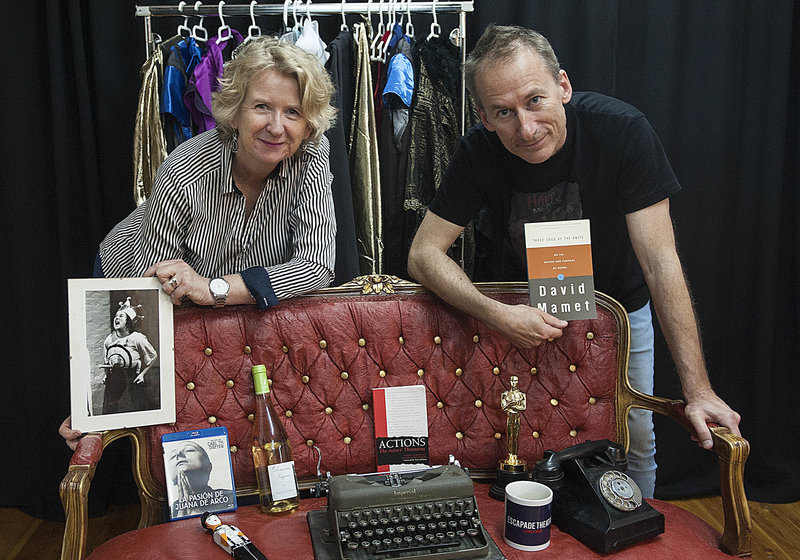Actors, co-founders of escapade theatre
(Barcelona)
Sue Flack & Caspar
Sue Flack and Caspar, British actors living in Catalonia, co-founded Escapade Theatre back in 1997. Since then, they have produced top quality, acclaimed theatre in English. Often provocative, and with a high dose of satire and dark humour, they’ve never left their audience indifferent. Their latest adventure, is the play Silence, running at Teatre Almeria in Barcelona from May 8-26. We asked Sue and Caspar to talk about themselves and their careers, through a few objects that represent them most.
Sue Flack
2. Bottle of “Escapade” wine.
3. Actions: The Actors Thesaurus by Marina Calderone.
4. Escapade mug.
5. Oscar.
Caspar
1. DVD “The Passion of Joan of Arc”. A film made in 1928 by Danish director Carl Theodor Dreyer which made an instant impact on me when I first saw it at the cinema. A powerful work of art that tells of the trial, torture, execution and moral victory of an extraordinary woman. I’m not very materialistic but this is a treasured possession. It really is an exceptional and very moving film full of close-ups and with a devastating central performance by Renée Jeanne Falconetti. I’ve been totally obsessed with the cinema since an early age and this film has definitely been one of the most influential for me. As “Silence” deals with the world of silent films, this is a fitting entry in my film collection.
2. Book. “Three Uses of the Knife” by playwright and film director David Mamet is a wonderful book that shares his theory on the writing of drama. Mamet has always been an outsider, especially in Hollywood. He is outspoken and ferocious in his criticism of both the theatre and film world and the role of critics. A source of inspiration for all of my writing that served me well for the writing of “Silence”.
3. Telephone. I have almost always lived with a bakelite telephone. Beautiful objects to have at home (who would think to use one these days?), they have become collectors items. In “Silence”, Hollywood producer Sam Kaminsky is constantly in demand and needs to conduct his business on the phone. This is just one of the many phones he uses.
4. The Mime Doorstop. I picked up this doorstop in Portugal some years ago. As I attended mime school as part of my training in London, the figure attracted my attention. I’m not actually a great fan of classical mime but with Escapade Theatre Company we have always put our physical theatre talents to good use.
5. Typewriter. I wrote a novel when I was 18 on a machine very similar to this. Somehow it was much more satisfying than using the computer that I do today. I don’t use a typewriter anymore but am often reminded of the end of William Burroughs’ book, The Naked Lunch, when its hero, also a writer, is stopped by the police and asked to sign a document. He realises that he’s unable to use a pen because he’s spent all his life using a machine. This machine is used by Linda, Kaminskys’ secretary in “Silence”.

